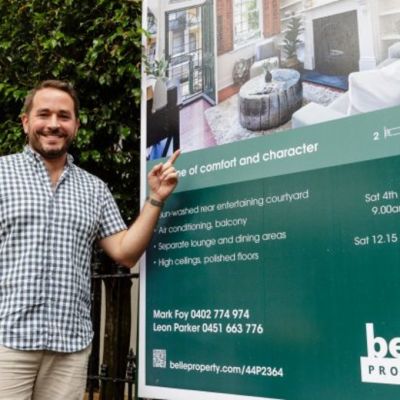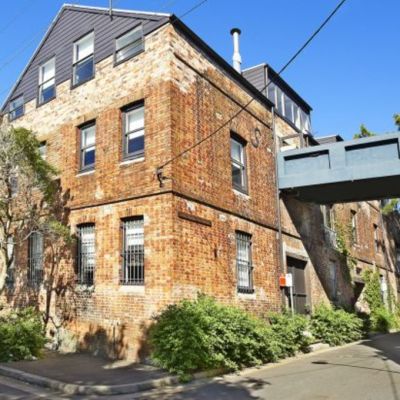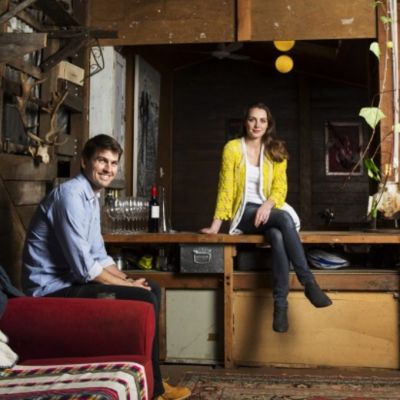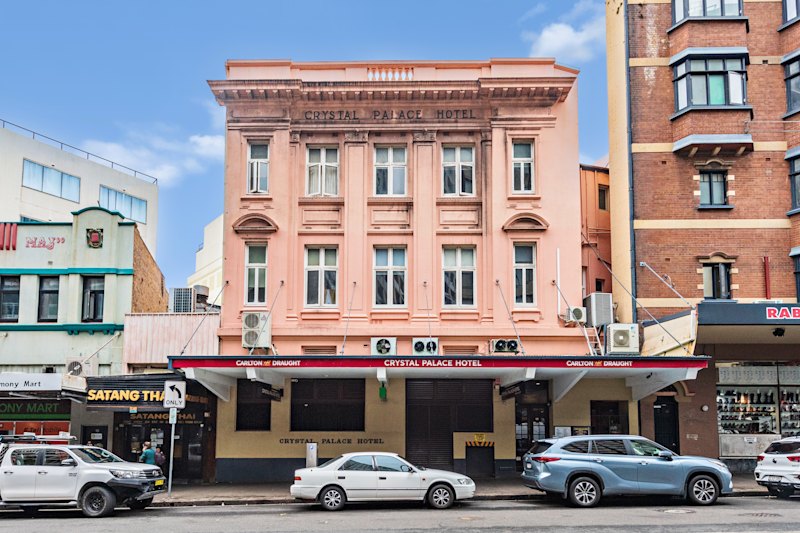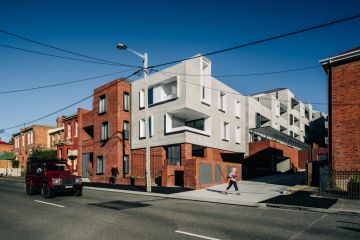Ken Done family business Cadmium Property to launch boutique apartments in sought-after Surry Hills
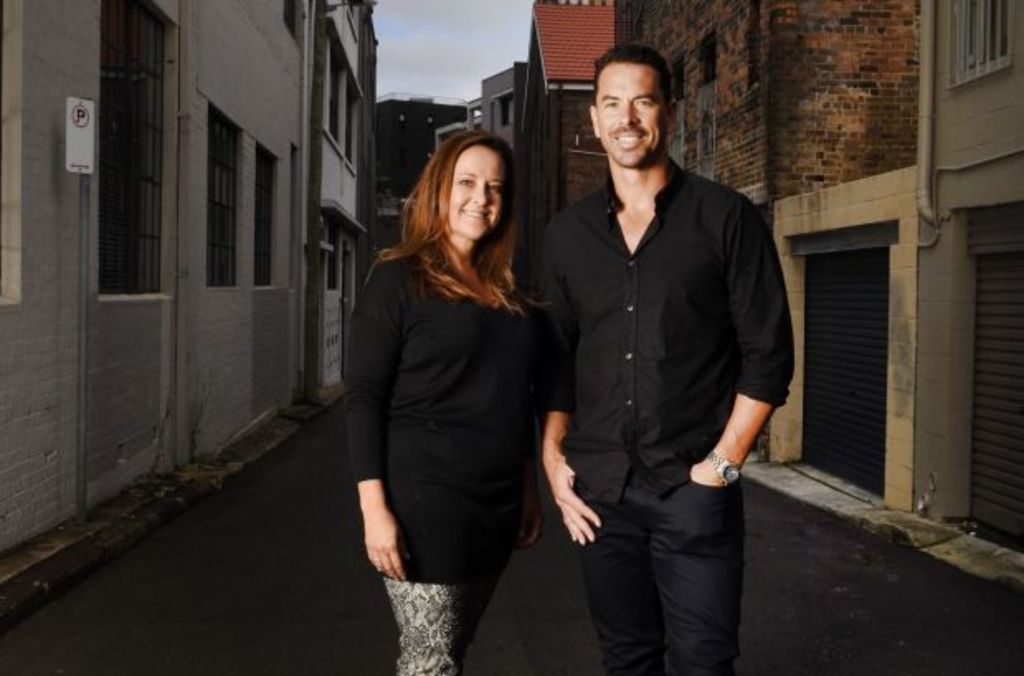
As a schoolgirl, Camilla Done used to visit her father at work occasionally. It was no drab office, for her father was no drab office worker but one of Australia’s best known and, in the 1980s and early ’90s, most commercially successful artists.
At the height of his fame, Ken Done was the creative force behind a multimillion-dollar empire that pumped out everything from bed linen and swimsuits to coasters, handbags and T-shirts emblazoned with his technicolour brushstrokes.
Camilla Done vividly remembers the Redfern warehouse as a hive of activity, with design studios, a gallery, admin area, piles of boxes, T-shirt printing room and, in his studio in the roof, her father.
“The building was originally the Foster Clark’s factory,” she says. “Every time there was a strong wind, you would get these nuggets of custard powder dropping from the ceiling. After all those years, they were still yellow. God only knows what they put in it.”
Camilla Done and her brother, Ken and Judy Done’s son Oscar, now run Cadmium Property, a residential and commercial property development company that is part of the family-owned business, The Done Group.
Cadmium’s next project is The Surry, a boutique development designed by Angelo Candalepas and Associates architects. The building, at the corner of Elizabeth and Devonshire streets in Surry Hills, will have 24 apartments, plus ground-floor commercial spaces.
Close to art galleries, design studios, artists’ spaces, actors’ studios, Belvoir St Theatre and the Golden Age Cinema, The Surry is being pitched as refined residences for buyers who want to live in Sydney’s creative heartland.
“Our family business was based in the Surry Hills and Redfern area for over 20 years, so it’s an area that we all know and love,” Camilla says. “For us, property development began quite organically, when we converted our original Thurlow Street warehouse into a series of commercial spaces and creative suites. We’ve all always worked in, and been passionate about, art and design, so it seemed a natural – and really exciting – progression.”
Camilla says the whole family is involved in every aspect of the business at some level, but her father hasn’t taken a hands-on role in the design of The Surry. Cadmium is also overseeing the refurbishment of professional suites down the road at 487 Elizabeth Street.
“It feels like one of the last pockets of Surry Hills where there is real rejuvenation happening,” shesays. “We really believe in that whole little area down there. It’s close to the city but it still has that real Surry Hills village feel.”
Gentrification has been under way in inner Sydney for decades. In the late 19th and early 20th centuries, Surry Hills was one of the city’s most impoverished and dangerous pockets.
How times have changed.
While boarding houses, government housing and health services maintain a broad mix of demographics in the neighbourhood, demand for inner-city properties has driven Surry Hills prices beyond the reach of many. Between 2006 and 2016, the median unit price in Surry Hills almost doubled from $423,000 to $825,000, according to data from PriceFinder, owned by Domain.
One of the agents for The Surry, CBRE residential projects director Caroline Fagerlund, says the most recent wave of gentrification in Surry Hills can be traced to the redevelopment of the old St Margaret’s Hospital site on Bourke Street, near Taylor Square, in 2002.
“It was a huge investment into the suburb at the time,” says Fagerlund, who marketed the project. “It offered buyers high-rise, architecturally designed apartments with views. People started to realise that this suburb has a lot more to offer than being somewhere to go out at night.”
Whereas a decade ago, Surry Hills was popular among young people drawn to the bright lights of Oxford Street, Fagerlund says the area is increasingly attracting an older, more affluent demographic. Past projects in this vein include Cornerstone’s Griffiths Teas and No.1 Lacey, The Pelican by developer Stasia and Hutch and Hutch from BridgeLane.
“People of all ages, but particularly downsizers from the north shore and eastern suburbs, are drawn to the proximity to the city and the walkability of the suburb,” Fagerlund says.
As well as a smorgasbord of artistic offerings, Surry Hills has hip cafes around just about every corner, fashion on Crown Street and a swag of furniture and homewares stores. “When you walk out your door, whatever you want to be part of is here.”
An apartment building offers sanctuary to its residents but it also forms part of the fabric of the neighbourhood. The Surry is to be built on a site currently occupied by an office building and car park.
The design is a robust, horizontal expression of concrete layers that have been stepped for light and shadow to play on the facades. A series of tiled triangular blades define the interface with Elizabeth Street.
Architect Angelo Candalepas says the design seeks to add to the texture of this corner of the city.
“We aspire to do so by providing architectural proportions, a carefully considered colour palette and eternal materials that are at once unexpected as they are appropriate for this context,” Candalepas says. “This building will have much to offer back to the street.”
Passers-by on their way to the city will see hand-coloured green glazed tiles on the screening blades. Travelling away from the city, orange tiles will be visible. “These two colours provide a reminder; an abstracted memory, of where you have walked from.”
Residents will have access to a rooftop garden with landscaping by 360 Degrees. On the ground floor, a landscaped courtyard is designed to act as a buffer between the street and the residences. The interiors, by Lawless & Meyerson, are described as “a calm palette with an urban edge”.
The brochure for The Surry includes interviews with creative types who work in the neighbourhood. A common theme is the desire for Surry Hills to retain its strong connection with the arts. Stephen Ormandy, co-founder of the cult jewellery and homewares brand Dinosaur Designs, says he hopes the creative community can still afford to be in Surry Hills in the future.
Camilla Done has witnessed decades’ worth of changes in the neighbourhood. In her view, the energy that drives the change, coupled with the suburb’s history and character, are what make it so special. “Surry Hills will always have a creative heart.”
The Surry is due to launch on March 25.
See more of The Surry at Domain or find other apartments like it by downloading the Domain app.
We recommend
We thought you might like
States
Capital Cities
Capital Cities - Rentals
Popular Areas
Allhomes
More
